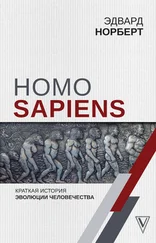Деннет Дэниел (р. 1942) – американский философ и когнитивист.
Деан Станислас (р. 1965) – французский нейробиолог.
Dehaene, Consciousness and the Brain.
Там же, ch. 7.
‘Te Cambridge Declaration on Consciousness’, 7 July 2012, accessed 21 December 2014,https://web.archive.org/web/20131109230457/ http:// fcmconference.org/img/CambridgeDeclarationOnConsciousness.pdf.
John F. Cyran, Rita J. Valentino and Irwin Lucki, ‘Assessing Substrates Underlying the Behavioral Efects of Antidepressants Using the Modifed Rat Forced Swimming Test’, Neuroscience and Behavioral Reviews , 29:4–5 (2005), 569–574; Benoit Petit-Demoulière, Frank Chenu and Michel Bourin, ‘Forced Swimming Test in Mice: A Review of Antidepressant Activity’, Psychopharmacology 177:3 (2005), 245–255; Leda S. B. Garcia et al.,‘Acute Administration of Ketamine Induces Antidepressant-like Effects in the Forced Swimming Test and Increases BDNF Levels in the Rat Hippocampus’, Progress in Neuro-Psychopharmacology and Biological Psychiatry 32:1 (2008), 140–144; John F. Cryan, Cedric Mombereau and Annick Vassout, ‘Te Tail Suspension Test as a Model for Assessing Antidepressant Activity: Review of Pharmacological and Genetic Studies in Mice’, Neuroscience and Behavioral Reviews 29:4–5 (2005), 571–625; James J. Crowley, Julie A. Blendy and Irwin Lucki, ‘Strain-dependent Antidepressant-like Efects of Citalopram in the Mouse Tail Suspension Test’, Psychopharmacology 183:2 (2005), 257–264; Juan C. Brenes, Michael Padilla and Jaime Fornaguera, ‘A Detailed Analysis of Open-Field Habituation and Behavioral and Neurochemical Antidepressant-like Efects in Postweaning Enriched Rats’, Behavioral Brain Research 197:1 (2009), 125–137; Juan Carlos Brenes Sáenz, Odir Rodríguez Villagra and Jaime Fornaguera Trías, ‘Factor Analysis of Forced Swimming Test, Sucrose Preference Test and Open Field Test on Enriched, Social and Isolated Reared Rats’, Behavioral Brain Research 169:1 (2006), 57–65.
Marc Bekof, ‘Observations of Scent-Marking and Discriminating Self from Others by a Domestic Dog ( Canis familiaris ): Tales of Displaced Yellow Snow’, Behavioral Processes 55:2 (2011), 75–79.
Подробнее о разных уровнях самосознания см.: Gregg, Are Dolphins Really Smart? , 59–66.
Carolyn R. Raby et al., ‘Planning for the Future by Western Scrub Jays’, Nature 445:7130 (2007), 919–921.
Michael Balter, ‘Stone-Throwing Chimp is Back – And This Time It’s Personal’, Science , 9 May 2012, accessed 21 December 2014,http://news.sciencemag.org/2012/05/stone-throwing-chimp-back-and-time-its-personal; Sara J. Shettleworth, ‘Clever Animals and Killjoy Explanations in Comparative Psychology’, Trends in Coginitive Sciences 14:11 (2010), 477–481.
Gregg, Are Dolphins Really Smart? ; Nicola S.Clayton, Timothy J. Bussey, and Anthony Dickinson, ‘Can Animals Recall the Past and Plan for the Future?’, Nature Reviews Neuroscience 4:8 (2003), 685–691; William A. Roberts, ‘Are Animals Stuck in Time?’, Psychological Bulletin 128:3 (2002), 473–489; Endel Tulving, ‘Episodic Memory and Autonoesis: Uniquely Human?’, in The Missing Link in Cognition: Evolution of Self-Knowing Consciousness , ed. Herbert S. Terrace and Janet Metcalfe (Oxford: Oxford University Press), 3–56; Mariam Naqshbandi and William A. Roberts, ‘Anticipation of Future Events in Squirrel Monkeys ( Saimiri sciureus ) and Rats ( Rattus norvegicus ): Tests of the Bischof-Kohler Hypothesis’, Journal of Comparative Psychology 120:4 (2006), 345–357.
I. B. A. Bartal, J. Decety and P. Mason, ‘Empathy and Pro-Social Behavior in Rats’, Science 334: 6061 (2011), 1427–1430; Gregg, Are Dolphins Really Smart? , 89.
Karl Krall, Denkende Tiere: Beiträge zur Tierseelenkunde auf Grund eigener Versuche (Leipzig: F. Engelmann, 1912).
Christopher B. Ruf, Erik Trinkaus and Trenton W. Holliday, ‘Body Mass and Encephalization in Pleistocene Homo’, Nature 387:6629 (1997), 173–176; Maciej Henneberg and Maryna Steyn, ‘Trends in Cranial Capacity and Cranial Index in Subsaharan Africa During the Holocene’, American Journal of Human Biology 5:4 (1993), 473–479; Drew H. Bailey and David C. Geary, ‘Hominid Brain Evolution: Testing Climatic, Ecological, and Social Competition Models’, Human Nature 20:1 (2009), 67–79; Daniel J. Wescott and Richard L. Jantz, ‘Assessing Craniofacial Secular Change in American Blacks and Whites Using Geometric Morphometry’, in Modern Morphometrics in Physical Anthropology: Developments in Primatology: Progress and Prospects , ed. Dennis E. Slice (New York: Plenum Publishers, 2005), 231–245.
См. также: Edward O. Wilson, Te Social Conquest of the Earth (New York: Liveright, 2012).
Cyril Edwin Black, ed., Te Transformation of Russian Society: Aspects of Social Change since 1861 (Cambridge, MA: Harvard University Press, 1970), 279.
NAEMI09, ‘Nicolae Ceauşescu LAST SPEECH (english subtitles) part 1 of 2, 22 April 2010, accessed 21 December 2014, http://www.youtube.com/watch?v=wWIbCtz_Xwk.
Tom Gallagher, Tef of a Nation: Romania since Communism (London: Hurst, 2005).
Robin Dunbar, Grooming, Gossip, and the Evolution of Language (Cambridge, MA: Harvard University Press, 1998).
TVP University, ‘Capuchin monkeys reject unequal pay’, 15 December 2012, accessed 21 December 2014, http://www.youtube.com/watch?v=lKhAd0Tyny0.
Цит. по: Christopher Dufy, Military Experience in the Age of Reason (London: Routledge, 2005), 98–99.
Serhii Ploghy, Te Last Empire: Te Final Days of the Soviet Union (London: Oneworld, 2014), 309.
Время сновидений – термин, введенный этнографом Адольфусом Питером Элкином и обозначающий общее для всех австралийских аборигенов представление о своеобразной мифологической эре, эпохе творения, продолжающей существовать в потусторонней реальности.
Fekri A. Hassan, ‘Holocene Lakes and Prehistoric Settlements of the Western Fayum, Egypt’, Journal of Archaeological Science 13:5 (1986), 393–504; Gunther Garbrecht, ‘Water Storage (Lake Moeris) in the Fayum Depression, Legend or Reality?’, Irrigation and Drainage Systems 1:3 (1987), 143–157; Gunther Garbrecht, ‘Historical Water Storage for Irrigation in the Fayum Depression (Egypt)’, Irrigation and Drainage Systems 10:1 (1996), 47–76.
Читать дальше
Конец ознакомительного отрывка
Купить книгу
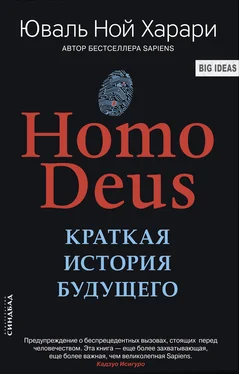

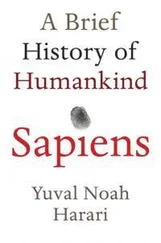
![Юваль Ной Харари - Sapiens. Краткая история человечества [litres]](/books/34310/yuval-noj-harari-sapiens-kratkaya-istoriya-cheloveche-thumb.webp)
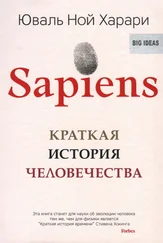
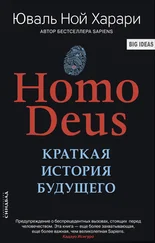

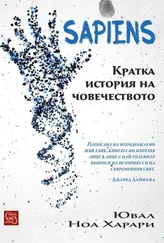
![Жак Аттали - Краткая история будущего [Мир в ближайшие 50 лет]](/books/407574/zhak-attali-kratkaya-istoriya-buduchego-mir-v-blizhajsh-thumb.webp)
![Юваль Ной Харари - 21 урок для XXI века [Версия с комментированными отличиями перевода]](/books/412481/yuval-noj-harari-21-urok-dlya-xxi-veka-versiya-s-ko-thumb.webp)
